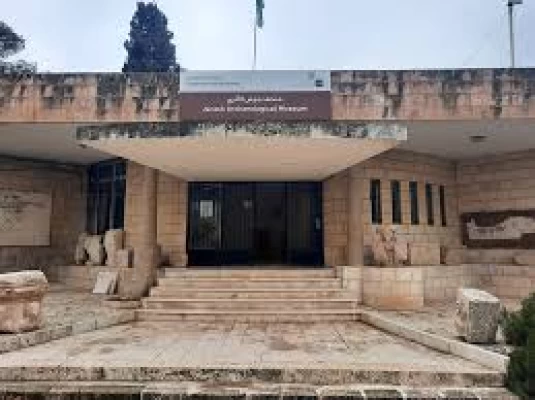
Jerash Archaeological Museum in Jordan
Jerash Archaeological Museum in Jordan
It contained the best archaeological finds in Jordan, especially in Jerash. Later, the museum became specialized in the archaeological finds found in the Jerash region, and it was developed from the outside and inside, and new display cabinets were added to accommodate the pieces found in different eras (from the Neolithic period to the Mamluk period), and these pieces were displayed in a historical sequence and according to varieties and daily uses.
The museum contains a large number of pottery, glass, metals, currency, jewelry, precious stones, some marble and stone statues and altars, as well as mosaics from various regions of Jerash, which are provided with extensive explanations.
The Jerash Archaeological Museum is located on a high hill overlooking the archaeological and residential city of Jerash in the Hashemite Kingdom of Jordan. The museum contains a large number of organic, such as bones and ivory, and inorganic, such as pottery, stones, glass, and metals.
Most of these objects are displayed inside display cabinets and others are freely displayed inside the museum, and these objects represent the various eras and civilizations that have succeeded in the city of Jerash since the Stone Age. The collections of this museum are particularly noteworthy because they consist of the archaeological finds of Jerash.
The aim of this paper is to evaluate the relative humidity, temperature and illumination provision of the museum and the implications of these conditions on the objects of the museum. For many museums, the issues of maintaining stable temperature and relative humidity levels are greatly complicated by external factors, such as climactic changes and the number of visitors.
Modern approaches to the conservation and protection of ancient cultural heritage are proposing the use of the concept of preventive maintenance, one of the most essential elements of which is the management of temperature and relative humidity within the confines of the museum.
One of the Greek cities that played a significant and prosperous role in the second and third centuries AD is Jerash, which is home to a variety of interesting Roman monuments and ruins, including the Arc de Triomphe, two theaters, numerous temples dotted throughout the city, including numerous churches, and Columns Street, which is made up of more than a hundred columns.














